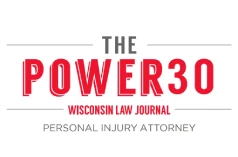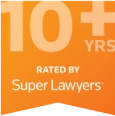100 Distracted Driving Facts & Statistics
$800K
Car Crash
$528K
Premises Liability
(Verdict at Trial)
$500K
Car Crash
$450K
Car Crash
$6.0M
Dog Bite Attack
(Verdict At Trial)
$3.0M
Premises Liability
$1.15M
Trucking Crash
$1.M
Trucking Crash
$800K
Car Crash
$528K
Premises Liability
(Verdict at Trial)
$500K
Car Crash
$450K
Car Crash
$6.0M
Dog Bite Attack
(Verdict At Trial)
$3.0M
Premises Liability
$1.15M
Trucking Crash
$1.M
Trucking Crash
Driving has become an apathetic activity for most Americans. The result of this attitude has led to 3,287 deaths a day from auto accidents. Of these thousands of deaths, at least nine of them are the result of distracted driving. Those nine deaths are preventable, and we are dedicated to making sure everyone in Wisconsin avoids distracted driving.
Number of U.S. road traffic-related injuries and fatalities 1990-2017
Source: NHSTA
Distracted driving has become more prevalent as our technology becomes more streamlined. To raise awareness of the issue, April is now Distracted Driving Awareness Month to emphasize the importance of keeping your attention on the road when you drive.
The Groth Law Firm has compiled 100 facts to educate all of our clients on how they can prevent being a statistic in this epidemic. Read on:
Total number of licensed drivers in the U.S. in 2017, by state
Source: Federal Highway Administration
The Numbers Behind Distracted Driving
- Distracted driving accidents account for 25% of car accident deaths.
- For deadly accidents, teenagers are the largest demographic that reports being distracted while driving.
- Distracted Driving makes up more than 58% of teen crashes.
- In 2015, distracted driving resulted in 391,000 injuries.
- In the same year, distracted driving was indicated as a significant part of 3,477 traffic deaths.
- 9 people in the U.S. are killed daily from distracted driving, according to the Department of Motor Vehicles.
- Distracted driving is considered a preventable epidemic in the United States.
- Because there is not a way to check for distracted driving following an accident, it’s universally understood that accidents caused by distracted driving are under-reported.
- It takes three seconds of taking your eyes off the road for a crash to occur.
- Car crashes kill more teens than anything else in America.
- 16 to 19 year-olds are three times to die in a car crash compared to other age groups.
- Americans are driving more, leading to more accidents and deaths.
- Distracted driving has been called “new drunk driving”.
- Driving distracted gets compared to drunk driving due to the same psychological pattern: drivers will drive distracted until they are caught or get in an accident.
- Distracted driving is difficult to predict and catch proactively.
- 80% of drivers confess all manners of distracted driving, like changing clothes, steering with a knee, painting nails, and shaving.
- Even though drinking and driving fatalities have decreased in teens, the number of car accident deaths has not due to distracted driving.
Driving under the influence of alcohol in U.S. persons by age 2015
Source: SAMSHA.gov
Driving under the influence of alcohol in the U.S. from 2002 to 2015*
Source: SAMSHA.gov
Types of Driver Distractions
- The NHTSA classifies three types of distracted driving. The first is visual tasks, something as simple as looking at a billboard while driving.
- The second is manual tasks, which require the driver to remove a hand off the wheel. Texting is the most common of these.
- The third is the cognitive tasks. That’s when a driver’s mind wanders away from the task of driving.
Worst types of drivers according to drivers in the U.S.
Source: Expedia
Distracted Driving Contributing Factors
- Changing the volume and air conditioning in the car accounts for 2% of traffic casualties from distracted driving.
- Driving with other people in the car accounts for 5% of traffic fatalities concerning distracted driving.
- When a teen drives with a passenger, the risk of them dying in a car accident doubles. This quintuples when there are more than three passengers in a car.
- 7% of distracted driving deaths are caused by people, objects, or events occurring outside a vehicle that pull a driver’s attention away from the road.
- Only 1% of distracted driving accidents result from lighting or putting out cigarettes.
- 62% of distracted driving results from drivers losing mental focus on the road.
- 80% of car accidents are caused by a driver being distracted.
- 2% of distracted driving accidents are the result of eating or drinking.
- Your attention span to the road decreases by 40% when you listen to music or podcasts in the car.
- 20% of drivers admit to doing their hair while driving.
- Studies show holding off a bathroom break can cause a major distraction while driving.
- Cell phone use is the second highest cause of distracted driving. 14% of distracted driving fatalities come from cell phone use.
- Snacking, reading, and personal grooming all increase the chance of a collision by two to three times.
- Driving with kids results in parents taking their eyes off the road for an average of 3 minutes and 22 seconds during a 16-minute car ride. That’s more than a fifth of the trip.
- 65% of dog owners admit to tending to their pets while driving.
- 53% of drivers think “infotainment” in their vehicle like touchscreen navigation is safe to use.
- While multitasking technology is not as safe as car companies market it to be.
- NHTSA says that eating and drinking increases the likelihood of an accident by 80%.
- The most distractable foods are hot soups, sandwiches, ice cream, and french fries.
Road fatalities per 1,000,000 inhabitants in selected countries in 2017, by country
Source: OECD
Cell Phones and Distracted Driving
- It is estimated 660,000 drivers use cell phones while driving during daylight hours.
- Reading a text causes drivers, on average, to take their eyes off the road for 5 seconds. If you are driving at 55 miles per hour, that means that drivers move around the length of a football field with their eyes closed in five seconds.
- Cell phone uses when driving leads to 1.6 million crashes annually.
- Texting while driving is 6 times as deadly than driving while drunk.
- 25% of car accidents are the result of cell phone usage.
- 11 teens die from texting and driving every day.
- While 94% of teen drivers acknowledge the dangers of texting and driving, only 35% of those polled admitted to texting and driving.
- The CDC reports teens who reported to texting and driving frequently also proved to be more likely to ride with a driver who is drunk, more likely to drive drunk, and less likely to wear a seatbelt.
- 25% of teens admit to answering a text every time they drive.
- One-fifth of teens and one-tenth of parents admit to having stretched-out texting conversations when driving.
- An Everquote survey observed that 96% of respondents cited themselves as a safe driver, yet 56% of respondents confessed to using a phone while driving. (Fortune)
- The New York Times cites apps as a chief reason behind the increase of distracted driving.
- Texting and driving results in 400% more time with a driver’s eyes away from the road.
- Texting and driving increase the likelihood of an accident by 23 times.
- 77% of adults and 55% of teen drivers think they can manage to text while driving successfully.
- An NHTSA survey revealed only 20% of teenagers believe texting impacts their driving performance.
- Teens that text and drive will cross over lanes 10% of their total drive time.
- A University of Utah study found the reaction time of a teenager using a cell phone is comparable to that of a 70-year-old woman who is not using a phone.
- 82% of teenagers have a cell phone. 52% of these kids admit to talking on the phone while driving and 32% text while driving.
- A “fear of missing out” or “FOMO” is considered to be one of the reasons for texting and driving. FOMO is the anxiety caused by missing an exciting or interesting event, leading to people using their phones while driving.
- 28% admit if they’re afraid of missing something important when driving, so they will use their phone as a result.
- Drivers who talk on the phone are 2.2 times more likely to be in a car accident.
- Drivers are 12.2 times more likely to be ina car accident while dialing a phone.
- 43% of drivers admit to texting and driving to stay connected with friends and family.
- According to a CBS survey, 33% of respondents admitted to using a phone while driving.
- 27% of respondents admitted to texting and driving because they feel there’s an expectation of responding immediately.
- 8% of people surveyed by Consumer Reports revealed they watch videos on their phone when driving. (Consumer Reports)
- Distracted driving and hands-free driving are the same things.
- A hands-free device can keep you distracted for at least 27 seconds after you use it.
Share of U.S. respondents using their smartphone while driving in 2015
Source: Statista Report
U.S. adults who use in-car voice assistants by frequency 2018
Source: VoiceBot
The Science Behind Distracted Driving
- David Greenfield, Founder of the Center for Internet and Technology Addiction, cited the addictive nature of smartphones as a cause of distracted driving.
- Our brains naturally react to the alerts our phones give us that signal a push notification, making it more difficult to withstand the urge to use your phone while driving.
- An incoming text or notification results in an increase of dopamine, which is a hormone that results in a feeling of arousal, leading to a need to check your phone, even if doing so will deliberately put you at risk.
- CNN indicates experts compare the pleasure that arises from using a smartphone to that felt while eating, drinking, or sex.
- Every time you operate a phone while driving without consequence, it reinforces the idea it’s safe to continue doing.
Distracted Driving Laws
- While many states are passing laws against texting and driving, their effectiveness needs further study. (CDC)
- 15 states and D.C. have banned drivers from using phones as of June 2017.
- As of June 2017, 47 states and D.C. have outlawed texting and driving.
- Many states have selected progressive driver licensing regularities for teenagers to alleviate the risk of distracted driving.
Distracted Driving Consequences
- There is a variety of consequences connected with distracted driving, death being the worst.
- Another possible consequence of distracted driving is being ticketed or fined.
- If an accident happens as a result of distracted driving and other people involved are killed or injured, more severe criminal charges could come for you.
- Accidents caused by distracted driving can result in higher insurance premiums.
- In 2012, a Massachusetts teen served a year in jail as the result of a texting and driving fatality.
- In 2016, a 17-year-old in Anchorage, Alaska spent a year in prison after killing a mother of two in a distracted-driving accident.
- The average fine for a first-time texting and driving offense is $100.
- In Alaska, texting and driving can result in a potential $10,000 fine.
- In recent years, there is a debate over whether or not cell phone providers can be held liable in cases against distracted driving that involve cell phones.
- Suits against Apple have been filed involving car accidents where FaceTime was the cause of distracted driving.
- In 2011, a California woman was sent to prison for six years after killing a 23-year-old driver while texting and driving.
Number of traffic-related fatalities in the United States 1975-2017
Source: NHTSA
U.S. motor vehicle crashes – total number of injured persons 1990-2017
Source: NHTSA
Distracted Driving Campaigns
- AT&T’s “It Can Wait” campaign is one of many national campaigns to prevent texting and driving.
- An AT&T study showed that many cell phone users communicate with an average of five people per day. 81% of people studied admitted they would reduce or stop using their phone while driving if asked so by one of their “top five”.
- 70% of those surveyed noted they would download an app to block smartphone notifications if one of their “top five” told them to.
- The Huffington Post reported there was a visible increase in demands for business presentations that asked employees to take a pledge to not drive distracted. (Huffington Post)
- Automotive and tech companies are working to develop technology to decrease distracted driving.
- Newer vehicles have advanced safety features, such as automatic emergency braking and lane-keeping assistant.
- NHTSA strives to decrease distracted driving by instructing people about the dangers.
- The End Distracted Driving Campaign (End DD) has 700 volunteer speakers who educate people all across the country.
- In 2009, the U.S. Department of Transportation began a campaign to raise awareness about distracted driving.
- Massive media campaigns have been started across the company for many years to decrease distracted driving.
- Research shows younger drivers find distracted driving to be a “selfish” act.
- The Road to Zero initiative was created with the purpose to eradicate traffic deaths by 2050.
Distracted driving comes in many forms and often leads to nothing good. Don’t become a statistic in this epidemic — practice being a safe driver for you and everyone else on the road. Set an example so we can keep Wisconsin safe!
Milwaukee
Practice Areas
Wauwatosa
Practice Areas
What Our
Clients Say
“Jon, Of the many professionals I had spoken with, to represent me and look to for support, you took me totally by surprise with your approach of compassion, concern, professionalism and direction for my individual situation. This period of my life and its new challenges has been very humbling and introspective for me. Thank you for your spirit of compassion and care that you have provided for me in a world that hopefully will not become increasingly more difficult to do so in.”
- Richard















